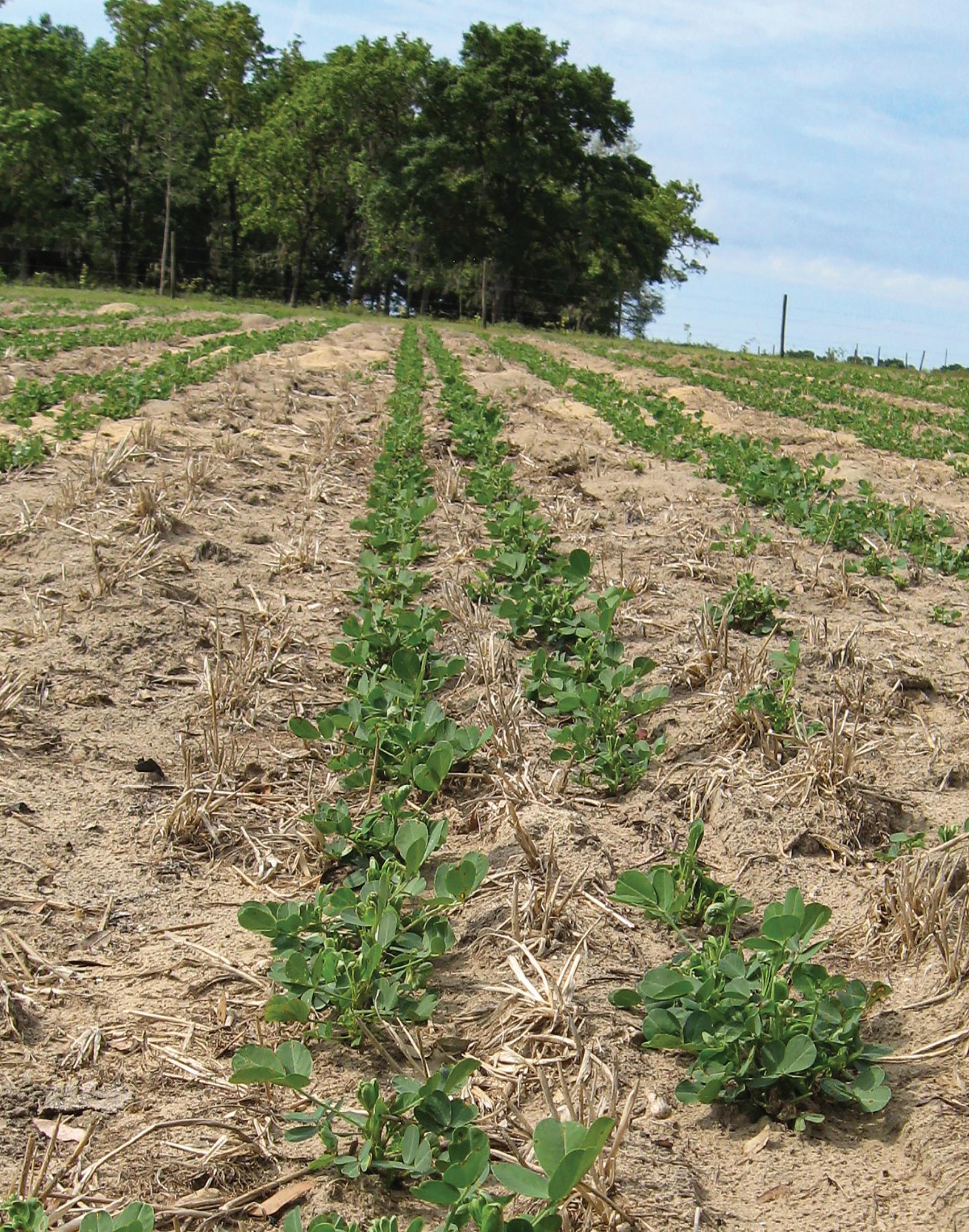












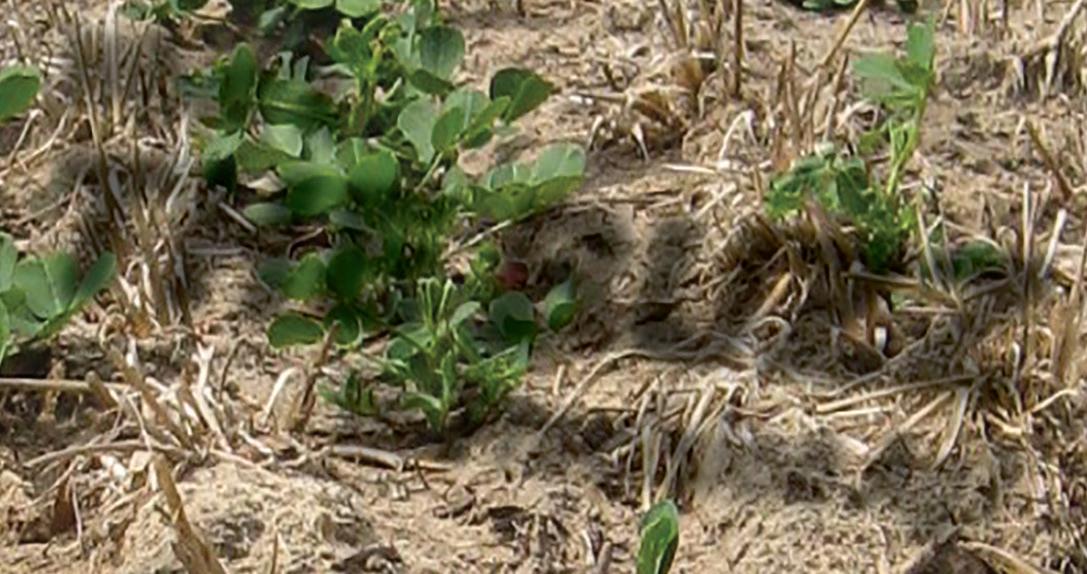


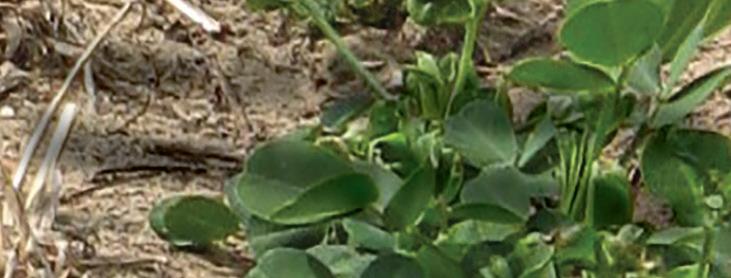
ONE GROWER www.peanutgrower.com PEANUT GROWER The APRIL 2023 What’s THE BUZZ In Precision Ag? Use This 14-Point Planter Checklist New Herbicide MOA Is A Welcome Addition Layer On Residuals For Season-long Protection

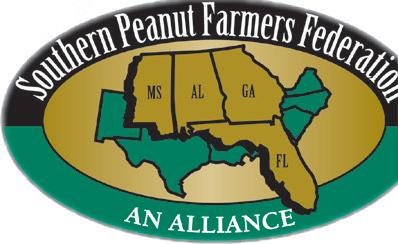






16










Final Planting Reminders

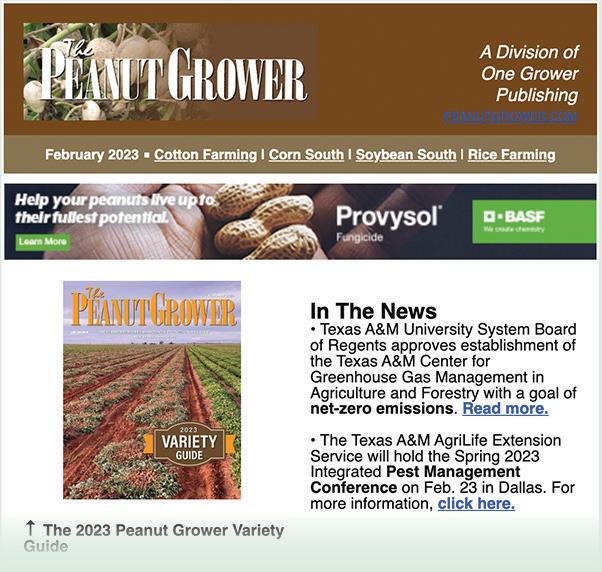


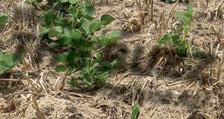


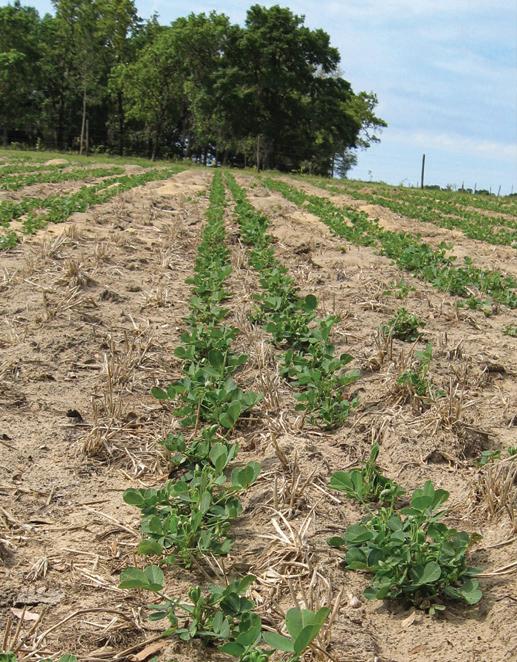
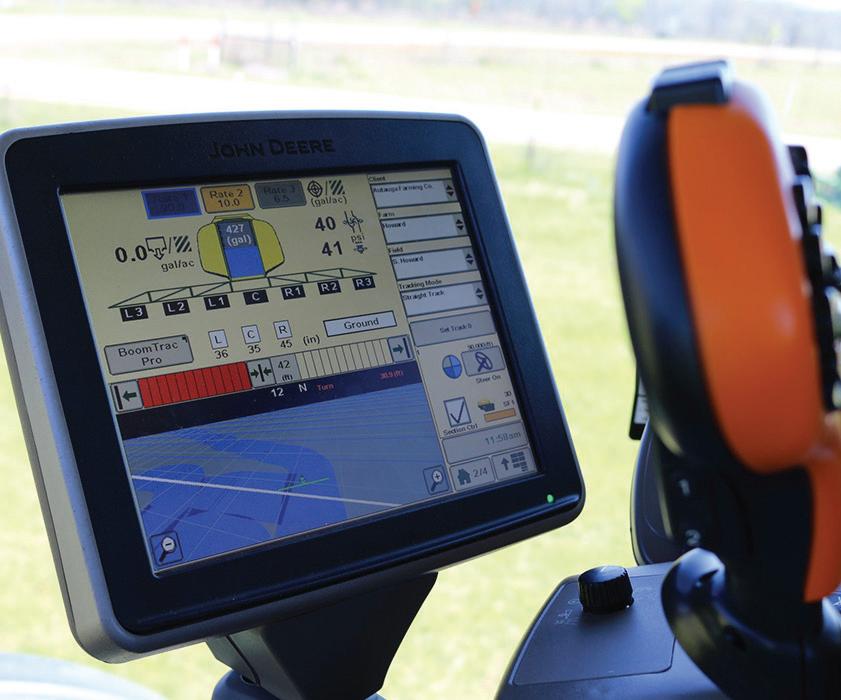
APRIL 2023 • THE PEANUT GROWER / 3 TWITTER: @PEANUTGROWER 12 4 Editor’s Note Let’s go fly a drone! 5 News Briefs UGA to host precision ag conference in May 8 Market Watch Single digit increase in acreage needed Volume 35 • Number 4
THE PEANUT PRODUCER'SMARKETING & PRODUCTION MAGAZINE PEANUT GROWER The APRIL 2023 What’s THE BUZZ In Precision Ag? Use This 14-Point Planter Checklist New Herbicide MOA Is A Welcome Addition Layer On Residuals For Season-long Protection Features
Is Your Planter Ready? Follow this 14-point checklist to evaluate and make adjustments for optimal planter performance.
What’s The Buzz In Precision Ag? Spray drones, the science of sustainability and the digital agriculture market are some of the hot topics.
New MOA
A Welcome Addition
specialists offer guidance on Brake herbicide in peanut.
Cover photo by Amanda Huber
10
12
14
Is
Extension
and past missteps highlight cues for before, during and just after planting.
Effort
on the residuals for effective, season-long weed management.
20 Peanut Pointers Rotate herbicide MOAs to slow resistance APRIL 2023
Sign up for the monthly e-newsletter at peanutgrower.com to have exclusive industry news and content delivered directly to your inbox. www.peanutgrower.com PeanutGrower @PeanutGrower @ThePeanutGrower
Research
18 A Lasting
Layer
Departments
Stay Connected
EDITORIAL/PRODUCTION
Editor Amanda Huber ahuber@onegrower.com
Copy Editor Cassidy Nemec cnemec@onegrower.com
Art Director Ashley Kumpe
Digital Content Manager Katie Guthrie
ADMINISTRATION
Publisher/Vice President
Lia Guthrie (901) 497-3689 lguthrie@onegrower.com
Associate Publisher/Editor-In-Chief Carroll Smith (901) 326-4443

Associate Publisher/Sales Scott Emerson (386) 462-1532 semerson@onegrower.com
Audience Services
Kate Thomas (847) 559-7514
Production Manager David Boyd dboyd@onegrower.com
For subscription changes or change of address, call (847) 559-7578 or email peanutgrower@omeda.com
EDITORIAL ADVISORY BOARD
Scott Monfort
Extension Agronomist
University of Georgia
Dell Cotton
Peanut Growers Cooperative
Marketing Assn., Franklin, VA
Kris Balkcom
Agri-Program Associate
Auburn University
Dan Anco
Extension Peanut Specialist
Clemson University
Editor’s Note
Let’s Go Fly A Drone!
The phone rings, and you pick it up. The caller says, “Do you mind if I kill some of your weeds?” That’s a phone call one Alabama farmer received from Auburn University’s Extension weed specialist Steve Li. What prompted Li’s call was a field of marestail he had seen while driving from one meeting to another. The field looked like a premium opportunity to practice herbicide application with a spray drone.
That was the story Li told at the recent precision ag workshop hosted by AU and the Alabama Extension Service. According to Li, spray drones are a hot ticket these days. Already widely used in the Midwest, spray drones have tremendous potential in the Southeast as well.
Emi Kimura
Extension Agronomist
Texas A&M University
David Jordan
Extension Agronomist
North Carolina State University
Glen Harris
Extension Agronomist

University of Georgia
Jason Ferrell
Extension Weed Specialist University of Florida
ONE GROWER PUBLISHING, LLC
Mike Lamensdorf PRESIDENT/TREASURER Lia Guthrie PUBLISHER/VICE PRESIDENT
The Peanut Grower (ISSN 1042-9379) is an agribusiness magazine for U.S. peanut producers. Published in eight monthly issues, January through July and November. Annual subscriptions are $40.00. Single Copy price is $5.00. Annual overseas subscriptions are $70.00, including Canada/Mexico. Periodicals postage paid at at Memphis, Tennessee, and at additional mailing o ices. Copyright © 2023 One Grower Publishing, LLC, all rights reserved except where otherwise noted. The Peanut Grower ® is a registered trademark, which reserves all rights granted by the U.S. Patent and Trademark O ice in association with the registration.
POSTMASTER: SEND ADDRESS CHANGES TO OMEDA COMMUNICATIONS, CUSTOMER SERVICE DEPARTMENT, P.O. BOX 1388, NORTHBROOK, IL 60065-1388. All statements, including product claims, are those of the person or organization making the statement or claim. The publisher does not adopt any such statement or claim as its own, and any such statement or claim does not necessarily reflect the opinion of the publisher. Printed in the USA.
One Grower Publishing, LLC, also publishes Cotton Farming, Rice Farming, Soybean South and Corn South

One Grower Publishing, LLC 875 W. Poplar Ave., Suite 23, Box 305 Collierville, TN 38017
Spray drones have many benefits over both ground rigs and the use of airplanes. They are versatile and can be used for everything from pesticides to plant growth regulators, liquid fertilizers and even dry granular pesticides and fertilizers or broadcasting cover crop seeds.
Drones are easy to learn to operate and require no aviation or pilot experience. Unless you plan to make drone flying a business, it does not require a certification. One of the biggest benefits is spraying when it is too wet for a ground rig to get into the field. Collision avoidance radar allows it to avoid obstacles. It can be completely autonomous, and you can map and spray a field with the same drone.
Li says tank sizes are increasing as well. “A few years ago, the largest tank was almost 8 gallons, and now it is 10.6 gallons, or 40 liters. In the next three to five years, 20 to 50 gallon-size spray drones will be available.” Overall, spray drones are getting bigger, better, more efficient, less expensive and more cost effective.
If you want to learn more about spray drones, Dr. Li will be speaking at the Integrative Precision Agriculture International Conference, May 18-19 at the University of Georgia Center for Continuing Education. Li, along with UGA’s Simer Virk, Perrotis College of Greece professor Athanasios (Sakis) Gertsis and Application Insight LLC principal Mark Ledebuhr will conduct a spray drone workshop at UGA’s J.P. Campbell Research and Education Center with presentations and demonstrations. The workshop will be on day two, and it is possible to only register for the workshop. Read more about this learning opportunity on page 7.
Maybe it doesn’t have quite the same ring as the song made popular in the classic film “Mary Poppins,” but I expect we’ll start to see more drones flying soon.
4 / THE PEANUT GROWER • APRIL 2023 PEANUTGROWER.COM
Amanda Huber Editor, e Peanut Grower
News Briefs
House Ag Committee Recognizes Challenges
The U.S. House Committee on Agriculture held a hearing recently entitled: “Uncertainty, Inflation, Regulations: Challenges for American Agriculture.” Committee chairman Congressman G.T. Thompson (R-PA) says that “enduring production agriculture policies are essential to our national security. Maintaining a safe, abundant and affordable domestic food supply is equally essential, as is meeting the needs of perennial global food crises.”
During the hearing, committee members and witnesses discussed a variety of issues, including the necessity of raising reference prices for commodity programs in response to high input costs and lagging prices, as well as the issue of the Adverse Effect Wage Rates for H2A workers.
Congressman Austin Scott (R-GA), who was recently appointed as vice chairman of the committee, stressed the need for reference price reform in his questions to American Farm Bureau Federation President Zippy Duvall.
“Yes, it is time to broaden the baseline because those targets that we use and the commodity programs and the costs that we have to go to growing a crop is nowhere near where it was when that target was set,” Duvall says. “It needs to be modernized, and it needs to be a true safety net based on the cost of production today.”
Chairman Thompson closed the hearing with final remarks saying, “Getting the Farm Bill done right and on time will require a lot of work and attention from all of us, but we owe it to all our constituents—from producers to processors, and ultimately, to consumers—to get that policy right.”
2022 Peanut Crop Value Declines
According to the U.S. Department of Agriculture’s National Agricultural Statistics Service, the price of peanuts
averaged $0.262 per pound in 2022 or $524 ton, 7.8% higher than 2021. The value of the 2022 crop at farm level is $1.4 million, a 6% decrease from 2021. Harvested peanut acres were down 10.1%.
The highest average price was paid in New Mexico at $980 per ton followed by Texas at $780 per ton. The lowest average price was paid in Georgia at $496 per ton. About 49% of the revenue from peanuts was produced in Georgia. Ranking second in revenue was Florida at10%, followed by Alabama at 9.8%.
National Peanut Board Allocates Research Funds
The National Peanut Board recently reviewed and approved 74 state production research projects for fiscal year 2023 for a total of $2,043,266 in funding allocations.
In its 20-plus year history, NPB has invested and secured more than $45 million in production research funding through budgeted allocations and industry matching funds. Funding production research to increase efficiencies for America’s peanut farmers and their families is a core part of the board’s mission.
During the quarterly board meeting, a new strategic plan was approved by the NPB. Also, during the meeting, staff gave an update of the 2023 “We Grow Comfort” campaign, and new board members and alternates were sworn in. The next meeting of the National Peanut Board will be held April 3-6 in Des Moines, Iowa.
Georgia Senator Appointed To Ag Committees
Georgia Senator Reverend Warnock was appointed to three influential subcommittees on the U.S. Senate Committee on Agriculture, Nutrition and Forestry.
Warnock will serve on the Subcommittee on Commodities,
In Brief

• Ag Committee, Farm Bureau leader talk need for reference price reform.
• The value of the 2022 peanut crop declined 6% from the 2021 crop.
• Sen. Warnock appointed to several agriculture subcommittees.
• Premium Peanut searches for new chief executive after Zimmer announces departure.
• Georgia Peanut Commission, Peanut Proud donate to Atlanta-area food bank as part of March National Peanut Month.
• UGA to host precision agriculture conference seeking local solutions through global advances.
Risk Management and Trade, the Subcommittee on Conservation, Climate, Forestry and Natural Resources, and the Subcommittee on Food and Nutrition, Specialty Crops, Organics and Research.

Through his roles on his respective subcommittees, Senator Reverend Warnock will legislate and oversee federal policy regarding commodities, specialty crops, nutrition benefits, agriculture research and producers’ access to markets and capital.
The Senator will play a crucial role in crafting the 2023 Farm Bill, the primary agricultural and food policy tool of the federal government reauthorized once every five years.
Premium Peanut Announces CEO Transition
Premium Peanut recently announced that its CEO, Karl Zimmer, will be stepping down in September following the completion of the fiscal year for personal reasons.
APRIL 2023 • THE PEANUT GROWER / 5 TWITTER: @PEANUTGROWER
News Briefs

“Premium Peanut is more than a company, we are a group of phenomenal people — from our grower owners to our employees to our board members,” Karl Zimmer says. “It has been an honor to partner with this great group of people in transforming an idea into an industry-leading peanut shelling and oil business.”

“On behalf of Premium Peanut’s board of directors, we want to express our sincere appreciation for Karl’s leadership over the last eight years and during the transition,” says Kent Fountain, Premium Peanut chairman. “Karl has built a strong leadership team, and his contributions to our ongoing success will be felt for years.”
The board will be initiating a search for the next CEO of Premium Peanut. Karl Zimmer and Kent Fountain will partner during the transition period to ensure Premium Peanut continues to deliver on its commitments until a new CEO is appointed.
Olam Announces Promotion

Olam Food Ingredients recently announced the promotion of Mike Davis to vice president of peanut shelling in the United States. Davis has been with OFI as senior sales director of pea-
nut shelling since July 2019. He has been in the peanut industry for more than 35 years, holding various roles in sales, marketing and procurement in the food manufacturing segment.
Davis assumes all leadership responsibility for facilities in Rochelle and Smithville, Georgia; Samson, Alabama; and the buying points.
Georgia Peanut Commission Celebrates Peanut Month
March — National Peanut Month — is a time to celebrate America’s favorite food! The Georgia peanut industry kicked off the celebration by hosting the 2023 Georgia PB&J Day at the state capitol. During the event, the Georgia Peanut Commission and Peanut Proud donated peanut butter to the Atlanta Community Food Bank.
Peanuts and peanut butter were promoted during the event by industry partners serving grilled PB&Js, country-fried peanuts, peanut candy and more. Governor Brian Kemp presented a proclamation recognizing March as National Peanut Month while Sen. Russ Goodman, chairman of the Senate Agriculture and Consumer Affairs Committee, and Rep. Robert Dickey,
National Peanut Month PB Donation
As part of the 2023 PB&J Day celebrating March as National Peanut Month at the state capital in Atlanta, peanut butter valued at $10,000 was presented to the Atlanta Community Food Bank by the Georgia Peanut Commission and Peanut Proud. The food bank provides food and grocery products to more than 700 nonprofit partner agencies with hunger relief programs throughout 29 counties in metro Atlanta and north Georgia. According to Ben Burgess, corporate relations manager with the food bank, the need for food assistance is not going away.
“A recent study of our service area showed that an average of 200,000 food-insecure households are served each month through the Atlanta Community Food Bank partner agency network. Peanut butter is a very nutritious and important product to those clients because it has a stable shelf life,” Burgess says. “One jar can make several
chairman of the House Agriculture and Consumer Affairs Committee presented resolutions recognizing the importance of Georgia’s peanut industry.
“Peanuts are Georgia’s official state crop, and the state boasts the largest share of peanut production in the U.S. at nearly 52% for the 2022 crop,” says Joe Boddiford, chairman of the Georgia Peanut Commission. “Georgia’s 4,000 peanut farmers contribute approximately $2 billion annually to the state and local economy.”
Sponsors and exhibitors include the Georgia Peanut Commission, Kroger, Georgia Agribusiness Council, Georgia Farm Bureau, Peanut Proud, Atlanta Community Food Bank and the University of Georgia Peanut Team.
President Carter Still Influencing The World
In late February, the Carter Center announced that former President Jimmy Carter, also a former peanut farmer, was in Hospice care and would spend his remaining time at home with his family.
The Carter Center, with the Carter Presidential Library, has been the former president’s headquarters for his writing, peacemaking and public health efforts
meals for a family or individual in need. This donation will help the nearly 10% of Georgian residents and the one in seven children who are food insecure in the state.”
Coincidentally, March is National Nutrition Month – a great time to recognize the nutritional value of peanuts. One serving of peanuts is a good source of protein, vitamin E, niacin, folate, phosphorus and magnesium. Peanuts are naturally cholesterol-free and low in saturated fat.
6 / THE PEANUT GROWER • APRIL 2023 PEANUTGROWER.COM
News Briefs
UGA’s Institute for Integrative Precision Agriculture To Host Global Conference



The Integrative Precision Agriculture International Conference — Local Solutions Through Global Advances will be held May 18-19 at the University of Georgia Center for Continuing Education and Hotel. Hosted by the University of Georgia’s Institute for Integrative Precision Agriculture, the conference will feature speakers who solve problems around the world and offer new perspectives on common challenges in the field.
Crop and livestock farms throughout Georgia are in a perpetual exchange of ideas and innovations to solve challenges that have tangible impacts on the state and country’s food supply. Participants of the two-day conference will share a vision for how integrative precision agriculture can be applied to solve critical issues facing crop and animal production.
“We thought it was important to provide a range of ideas on problem solving in other parts of the country or world,” says George Vellidis, a professor in UGA’s College of Agricultural and Environmental Sciences and one of the event’s organizers. “We invited a suite of people from around the industry who are on the cutting edge of some of these new agriculture technologies that we know will be a benefit to all our attendees.”
At the conference, session one will focus on new developments in the delivery and types of chemicals used to protect crops from insects or disease, providing insight into new technologies that could minimize chemical use by as much as 70%. In addition to the obvious financial cost efficiencies at stake, this would offset environmental costs as well.
On day two, speakers will focus on poultry, Georgia’s biggest agricultural industry in terms of dollars generated. Industry experts will offer new perspectives and integrative precision agriculture solutions that address concerns about animal welfare in poultry production.
Side Events Include Spray Drone Workshop, Stadium Tour And Hackathon
Conference attendees will have opportunities to participate in post-conference events like a spray drone workshop, student hackathon and tour of UGA’s Sanford Stadium.
for decades. The Carter Presidential Library in Atlanta holds a wealth of resources on the decisions made by the president and his administration.
Carter was the most unusual of
The spray drone workshop will be led by a pair of experts, one from Auburn University and another from Greece, whose experience with the technology varies based on the types of crops and climates.
The stadium tour will feature work from Gerald Henry, UGA professor in environmental turfgrass, whose lab examines turf maintenance in hopes of minimizing potential injury. Henry uses many precision agriculture technologies, like drones that can fly over fields to help identify turf weaknesses. He and his students will share their work, and then participants will be able to tour the world-class facilities of the two-time defending football national champions.
Lastly, the student hackathon will comprise an introduction to machine learning, deep learning and computer vision led by UGA School of Computing Assistant Professor Jin Sun. Students will learn basic concepts, data collection, choosing machine learning models and more. In the second part, students will use this knowledge to develop solutions to two challenges—one in crop production and the other in poultry production. The first will focus on analyzing farmland for crop yield prediction using satellite and drone data, the second on detecting and counting chickens in still images on challenging conditions. Teams developing the best solution to each problem will be awarded $1,000.
Registration for the full conference and one Friday event costs $100. Student registration is $25. Those interested in attending just the spray drone workshop can do so for $30.
Register online at https://research.uga.edu/news/ugasinstitute-for-integrative-precision-agriculture-to-hostglobal-thought-leaders-at-international-conference
20th-century presidents — perhaps even unique. He maintained his roots in the small town of Plains, Georgia, for his entire life. He and his wife have lived in the home they built in 1961.
His family business had been peanut farming and peanut harvest warehousing, and he returned to that business after his service in the Navy before entering politics.
APRIL 2023 • THE PEANUT GROWER / 7 TWITTER: @PEANUTGROWER
Market Watch
Single, Not Double, Digit Increase In Acreage Needed

The peanut market remains quiet as farmers and shellers are unwilling to negotiate on farmer stock peanuts. With no buying from manufacturers, there is no urgency on the sheller side to issue a 2023 contract. How long will this situation continue? The stalemate will likely go on until manufacturers need to purchase some of the 2023 crop coverage.
Other than being quiet, the market remains firm with Southeast medium runners at $0.63-0.64 on an FOB basis for current crop.
Buyers seem resolute to wait it out until the new crop. With a cotton in the mid $0.80s, there will be fewer acres of that crop. The peanut industry needs a high single-digit acreage increase, not double digit, with good yields and quality to maintain an adequate supply. In the absence of a contract, how many acres will actually be planted is a difficult question to answer.
How Many Acres Will Get Planted?
Manufacturers think producers are going to plant a lot more and prices will drop. Costs have increased for all parties, and prices may settle out around $475 to $500 per ton. Producers see the higher-shelled prices from the 2022 crop, and for good reason, want more for the 2023 crop. But without any competition for acres from cotton or corn, the industry will look for fewer acres of those crops and for more peanuts. A cotton industry survey indicates a 17% reduction in cotton acreage. Marketing analysts have urged farmers to look at soybeans.
State peanut specialists have estimated the peanut acreage for the 2023 season and predict an increase of about 7.1% with all states the same or increasing except Oklahoma.
Opinions about the acreage in Georgia
are varied. On the conservative side, some say it will be a 4.7% increase. Looking for a bigger increase, the more speculative group predicts more like a 10% increase. The U.S. Department of Agriculture National Agricultural Statistics Service will issue their prospective plantings report on March 31.


No PLC Payment Expected
The Price Loss Coverage program will not likely have a payout in October as the average price of peanuts paid to farmers averaged above the $535 per ton reference price.
One sheller recently announced a payout of $22 per ton, over and above contracts and other premiums from seed or irrigation. A new ReGeneration cover crop program will net the farmer another $10 per acre.
On the demand side, peanut use is expected to decline by 4% this marketing year. This is primarily due to a forecasted decrease in exports of 7%.
Peanuts In Food Use
Food use, which makes up the larg-
J. Tyron Spearman Contributing Editor, e Peanut Grower
est portion of peanut disappearance, is projected to increase only 1%. A 13% increase in peanut candy consumption kept peanut food use from falling much during the 2021-2022 marketing year, despite decreases in disappearance for peanut snacks, peanut butter, in-shell peanuts and other edible peanut products.
Over the first five months of the 20222023 marketing year — August through December — the quantity of peanuts used for peanut butter is at record levels, up 2.9% over the same period last year. This is crucial because more than half the peanuts used for food end up as peanut butter.
Peanut carryover at the end of the marketing year is expected to decrease by 8% to 1.1 million tons. The expected price for the 2022-2023 marketing year is at $540 per ton, which would be the highest level in 10 years.
Export Markets
Exports are relatively strong with Mexico and Canada as the major buyers. The United Kingdom and European Union may give the United States more
8 / THE PEANUT GROWER • APRIL 2023 PEANUTGROWER.COM
Leading Marketing Indicators (March 7, 2023) 2022 Acreage (-10.1%) ................................................... 1,411,000 acres 2022 Production (-12.5%) .................................................. 2,784,000 tons 2021-2022 Market Loan ..................................................... 2,568,453 tons 2022-2023 Market Loan ...................................................... 2,294,257tons 2022-2023 In Loan (3-7-23) ................................................ 1,797,591 tons 2022-2023 Domestic Usage (6 Mo.) ............................................. – 2.3 % 2022 Exports (10 Mo.) .................................................................. – 6.32 % NATIONAL POSTED PRICE (per ton) Runners -$424.68; Spanish - $413.41; Valencia and Virginias - $428.31
Market Watch
opportunities for shipments as our primary competitor, Argentina, has suffered devastating weather in drought, eight heat waves and an early frost.
China needs peanuts for crushing to make peanut oil. However, the higher-priced U.S. peanuts most recently have caused China to look elsewhere. Good U.S. quality commands a price China isn’t willing to pay for crushing.
United In Our Goal
It is time to decide whether to plant peanuts, corn, cotton or even soybeans. Check with your local peanut buying
point. The buying point managers are waiting for an offer from the shellers, and acreage will likely be limited. Be aware that Tomato Spotted Wilt Virus has been on the increase and could hit again. Follow Peanut Rx, the disease risk index, and invest in your management of TSWV.
Peanut teams will be in Washington D.C. soon meeting with all other Farm Bill participants hoping to save the peanut program. Our goal is to stay united and bring home a strong program that allows farmers to prosper while providing America and buyers around the world with a safe, abundant food supply.
Trade News From The American Peanut Council
The Codex Committee on Contaminants in Foods will again be taking up a discussion on a proposed standard for aflatoxin maximum levels in ready-to-eat peanuts. The meeting is scheduled for April 18-21, 2023, in Utrecht, The Netherlands. APC is actively engaged in working with the U.S. delegation and other stakeholders, citing the lack of scientific evidence to support such a standard and questioning the need for such a standard. Codex already has a voluntary standard for peanuts for further processing at 15 parts per billion. CCCF started work in 2014 to develop a voluntary standard for an aflatoxin maximum level in ready-to-eat peanuts and has had little consensus. Codex standards are used by some countries, primarily developing countries, as a default for their import requirements.



McKalip Discusses Trade Agenda
The Biden Administration’s new Chief Agricultural Negotiator, Ambassador Doug McKalip, is already out and about talking about his goals for expanding U.S. agricultural exports.
At USDA’s 2023 Outlook Conference, he highlighted four areas for success: 1) keeping the markets we have open; 2) expanding exports by fixing regulatory barriers; 3) opening new markets and
exporting new products; and 4) making sure trading partners “play fair.” He highlighted negotiations in the IndoPacific Economic Framework to make sure countries do not create non-tariff barriers in the name of “sustainability,” with recognition of the stewardship that American farmers already undertake. He noted that the U.S. negotiating approach is to provide flexibility for farmers’ practices, which need to be decisions at the farm level.
McKalip also encouraged the audience to not “shy away” from China because of possible unknowns in foreign policy. China is and is likely to remain a top-tier market for U.S. agricultural exports, and he is prepared to invest in that relationship to improve predictability and fairness.
Congressional Agenda On Trade
Despite a divided Congress, one refrain heard from both congressional Republicans and Democrats is the priority for Congress to protect its consti-
tutional role on trade. Some in Congress view actions by the Trump and Biden Administrations to be undermining congressional authorities by imposing retaliatory tariffs on imports and negotiating trade agreements without sufficient congressional input.
However, some optimism exists for progress on trade legislation over the next two years. While optimism is scarce for Congress and the White House to move on Trade Promotion Authority, which defines negotiating objectives, roles and responsibilities, Congress could act on other priorities. Top of mind would be renewal of the Generalized System of Preferences program, which provides reduced tariffs on imports from certain developing countries.
Congress could also act on the Miscellaneous Tariff Bill, which lowers U.S. tariffs on imports of certain goods. Congress may begin reviewing the African Growth and Opportunities Act renewal, which provides trade preferences to many sub-Saharan African countries.
APRIL 2023 • THE PEANUT GROWER / 9 TWITTER: @PEANUTGROWER
‘‘ Our goal is to stay united and bring home a strong program that allows farmers to prosper while providing America and buyers around the world with a safe, abundant food supply.
PHOTO COURTESY AMERICAN PEANUT COUNCIL
Is Your Planter Ready?
Follow this 14-point checklist to evaluate planter components and make adjustments to achieve optimal planter performance.
Planting represents a critical field operation in row crop production. Correct planter setup and maintenance can reduce downtime in the field while ensuring optimum seeding performance during planting, which generally leads to successful stand establishment. When it comes to planting, preparation is the key as any breakdowns in the field due to planter malfunction or planting mistakes can cost growers both valuable time and money.
Spending time on planter setup and preparation to get it field ready goes a long way for growers as it not only helps minimize downtime in the field, but a successful crop stand also sets the stage for the rest of the season. Timely and uniform stand establishment is important to maximize yield potential early in the season, and one of the main factors that can affect crop stand is planter setup and operation as it influences where and how uniformly seeds are placed in the soil.
The following 14-point checklist will help producers evaluate the various planter components and make any necessary adjustments to achieve optimal planter performance:

Toolbar: Make sure to level the planter toolbar before planting. The toolbar must be parallel to the ground when the planter is in operation to ensure proper row unit operation. This is an important adjustment, especially in no-till conditions, as an improperly leveled toolbar can result in the planter row unit nosediving or making insufficient ground contact.
Parallel arms: Check for any play in the parallel arm pivot points. Planters have excessive play in these
points after normal usage, resulting in the planter row unit wobbling and causing seed placement issues. Replace bushings, bolts or arms if there is any noticeable wear.
Main drive and chains: If the planter is equipped with drivelines and chains, they should turn freely without jumping or vibrating to achieve uniform seed placement. Check all the drive chains, chain idlers, sprockets and bushings, and replace any parts that are worn. Chains should be snug and rustfree to be in proper operable condition.
Coulters: Sometimes a singledisc coulter is mounted in the front of opening discs to cut through plant residue and loosen a narrow strip of soil. Check that the coulter is aligned directly in front of the opening discs and operating at a slightly shallower depth (around 1/4-inch) than the opening discs to prevent loosening soil and avoid making air pockets in the seed furrow.
Row cleaners: A pair of row cleaners is generally used in front of the row unit to remove any soil clods or crop residue when planting in reduced, conservation or no-till systems. Row cleaners should be adjusted so that they are barely touching the soil surface, only removing residue and not digging into the soil during planting.
Seed meters: Seed meters should be checked regularly before and during the planting season. Remove seed meter covers each year and examine them for any worn or damaged parts including vacuum seals and other internal components. Replace worn or damaged parts if needed. Seed meters can be tested on a test stand every year to verify meter performance before actual planting.
Seed tube: Check that seed tubes are in good condition and free of obstructions. Replace tubes that are cracked or have worn bottoms or edges. Seed tube sensors should be clean, secured properly to the tube and work-
10 / THE PEANUT GROWER • APRIL 2023 PEANUTGROWER.COM
1 2 3 4 6 7 5
ing as intended to ensure correct population feedback during planting.
Vacuum: Check that all vacuum hoses are connected properly to the main line and the seed meters. Inspect connections for any leaks or loose fittings. Vacuum pressure should be adjusted based on the seed size and shape as recommended by the seed disc manufacturer.
Opening discs: Check opening discs for correct sharpness and blade diameter. Replace disc openers if they are worn by more than a half-inch from the original diameter. To ensure adequate contact between the opening discs, perform a quick check by sliding a business card on either side of the contact point of the discs. Adjust the distance between the opening discs (shimming) if the distance between the two cards is more than 2 to 2.5 inches.
Gauge wheels: Evaluate the depth gauge arm, bushings and wheel. The gauge wheel should not rub too tightly against the disc and can be adjusted with shim washers or bushings if needed. The gauge wheels should not have a large gap between the disk and wheel. The arm and wheel should move freely up and down and should not stick in any position, and the gauge wheel should not have any wobble when rotated.
Seed depth: Set the appropriate depth for the crop being planted, and check the depth settings both on a hard surface and once the planter is taken to the field. Because row-to-row variability can exist on planters, seed depth should be checked on every row unit to ensure correct seeding depth across the whole planter. Any significant changes in field conditions during planting would require additional checks.
Downforce: Adjust the row unit downforce for the given field conditions so that you can barely turn the gauge wheel with one hand while the planter is in the ground. Make sure there is sufficient downforce on the row unit to create furrow at the desired seeding depth while not causing any compaction. Mechanical downforce systems can be adjusted by changing spring tension, whereas active downforce systems can be adjusted by changing downforce or margin settings via the in-cab display.
Seed firmers: Assess seed firmers and adjust the tension bolt if need-
ed. Worn seed firmers should be replaced as needed. Seed firmers can be beneficial in certain soil types, such as clay and loamy soils, to firm seed in the furrow and ensure adequate seed-to-soil contact.
Closing wheels: Ensure that closing wheels are perfectly aligned behind the opening discs so that they close evenly on either side of the trench. Closing wheel pressure should be adjusted so that they close the seed trench without causing excessive compaction or trenching.
Once in the field, growers should get out of the tractor and check seed depth, placement and seed-to-soil contact during the first pass. Adjust planter settings as needed to optimize planter performance within each field.

Also, check all these parameters anytime field conditions change drastically and especially when changing crops. PG
Article
APRIL 2023 • THE PEANUT GROWER / 11 TWITTER: @PEANUTGROWER
by Simerjeet Virk and Wesley Porter, University of Georgia Department of Crop and Soil Sciences.
8 9 10 11 12 13 14
When it comes to planting, preparation is the key as any breakdowns in the field due to planter malfunction or planting mistakes can cost growers both valuable time and money.
What’s THE BUZZ In Precision Ag?




 By Amanda Huber
By Amanda Huber
You open an app and snap a picture of a weed. The app helps you identify the weed and recommends control measures. Your phone beeps and a message pops up telling you the center pivot in field three has finished it’s route. By then, your spray drone has finished its current pass and is redocking — time to refill the tank and change the battery so it can spray the next map section. At one time, these things sounded futuristic, but this day is here.
What has become possibly the most valuable commodity in these technological advances is all of the data being produced by farmers every day.
The Digital Agriculture Market
Brenda Ortiz, Alabama Cooperative Extension System precision agriculture specialist, says the global digital agriculture marketplace is projected to reach $22 billion by 2026.
“What’s driving digital agriculture market growth are advancements and innovations in technology, affordability, connectivity and access, availability and changes in government policies,” she says. “North America is the largest and most mature market in relation to digital agriculture, followed by Europe with Asia-Pacific projected to be the fastest-growing market.”
What has changed is who and how data is produced. Ortiz says in the past, it was Extension agents and university researchers who collected and produced agricultural data and provided it to farmers in a one-way interaction.
“How is agriculture done today? We are all producing and



using data,” she says. “We all share the data in real time. Farmers can set up their own tests on the farm because you have the equipment and capability of collecting and analyzing the data now.
“In this system, everyone is generating data and collecting and exchanging data. This phenomenon is growing exponentially.”
Make Adjustments In Real Time
Ortiz says with the amount of technology now on farming equipment, tractors are being used not only to implement practices in real time, but also to collect data and analyze the quality of the operation.
“A lot of times, we just look at yield, but we also need to

12 / THE PEANUT GROWER • APRIL 2023 PEANUTGROWER.COM
Spray drones, the science of sustainability and the digital agriculture market are some of the hot topics in precision agriculture.
Technology in the tractor cab today is used not only to implement a practice, but also to collect and analyze data on the quality of the operation.
The global agricultural drone market is expected to reach $5.7 billion by 2025, at a growth rate of 36%.
look at quality. Technology allows you to collect and adjust what you are doing in real time, which is important,” she says.
“Yield monitors, variable-rate controllers and GPS all complement each other. If you have a variable-rate controller and a yield map created from yield monitors, you can create a prescription map for the variable-rate application of seed, nutrients or water during the upcoming season.
“Based on those maps, or other data layers like drone images, farmers can change the rate of an input across a field. This reduces overuse of resources on areas that perhaps don’t need them and increases resources on other parts of the field where the yield potential is higher,” Ortiz says.
Consumer Demand For Sustainability
There are a lot of things facing those of us in agriculture that we will need to use technology to help solve, Ortiz says. “Consumers are demanding sustainable practices at the farm level and at the processing plants. This is something that can’t wait five years to learn about and implement,” she says. “And it is not possible to solve these big challenges individually.”
That’s why groups like Field-to-Market: The Alliance For Sustainable Agriculture, which is a consortium of organizations, is working on some of the most urgent challenges facing our industry by forging collaborations and translating science into action, Ortiz says.
“We must work together in partnership with organizations such as the Peanut Sustainability Initiative and the U.S. Cotton Protocol to show the many ways farmers are better utilizing resources and being good stewards of the land they farm.”
To support these efforts to share data, Ortiz says companies are working to streamline data collection needed to document, track and trace management and sustainability efforts. An example is John Deere’s Fieldprint Platform.
Streamlining Collection And Communication
“The combination of the Fieldprint Platform’s sustainability metrics with John Deere’s precision technology platform will equip farmers with a powerful tool for measuring and advancing their stewardship and impact,” says Brandon Hunnicutt, chairman of Field to Market’s board of directors.
Although it may be consumers’ demands to know how their food is grown driving this data collection, everyone involved may be able to use the data for different purposes.
“Farmers know the data collected through technology on their farming equipment is providing them with more knowledge that leads to overall efficiency and sustainability,” Ortiz says. It may also drive Extension and university research efforts, equipment improvements and future technological advances. That’s an example of the interconnectedness of today’s digital agriculture markets.

Ag Drone Market
Another area exploding in growth is the use of drones, not only to monitor crops but also to implement management within the season.
Ortiz says the growth of this market can be attributed to the availability of software solutions to aid field survey and data analysis and increase in venture funding for the development of drones.
“The ag drone market is expected to grow 36% by 2025, producing more than 425,000 units by then,” she says.
Because of his interest in working with drones, Alabama Cooperative Extension System weed specialist Steve Li has become one of the foremost experts in the Southeast in drone usage.
“Drones have the potential to make a positive impact on the environment through targeted input applications, reduction of environmental impact and reduced waste,” Li says.
“When it comes to row-crop farming, growers have to deal with a lot of in-field variations,” he says. “Those variations mean that yield is usually not equal across the field. Growers have a few good sections, as well as some troublesome areas.”
Use Drones To Monitor And Manage The Crop
Li says new drone technologies will enable producers to pinpoint not-so-productive areas and also divert the expensive inputs to be able to use fertilizer and seeds more precisely.
“Spray drones make it easy for growers with small acreage, slopes or challenging field shapes to make field applications without taking a boom sprayer in the field or contracting a crop duster,” Li says.
Ortiz says the high adoption rate for drones and aerial data collection tools in agriculture is because of exemptions in operations by the U.S. Federal Aviation Association.
“Worldwide, the global agricultural drone market is expected to reach $5.7 billion by 2025, growing at a rate of 36% during the forecast period,” she says.
For the foreseeable future in agriculture, expect the digital agriculture market, the collection and use of sustainability data and the usage of drones for monitoring and managing agricultural crops to increase in importance and value. PG
APRIL 2023 • THE PEANUT GROWER / 13 TWITTER: @PEANUTGROWER
Brenda Ortiz, Alabama Cooperative Extension System precision agriculture specialist, speaks to farmers about precision ag technology at the Central Alabama crop tour in 2022.
New MOA Is A Welcome Addition
Extension specialists offer guidance on Brake herbicide in peanut.
Q&A
Brake herbicide received approval from the U.S. Environmental Protection Agency for use in peanut in 2023. Each state agriculture department must also approve the label.
University of Georgia Extension weed specialist Eric Prostko, says, “I have been working with this herbicide for 10-plus years and am very glad that peanut growers will have another tool in their toolbox.”

In anticipation of receiving that final label from the Georgia Department of Agriculture, Prostko offers the following questions and answers that might be helpful when thinking about adding Brake to your herbicide program.
Q: Who is the manufacturer of Brake herbicide?
A: Brake was developed by SePRO Ag (https://ag.sepro.com).
Q: What is the active ingredient in Brake?
A: The active ingredient in Brake is fluridone, which is also sold in the aquatic weed control market under the trade name of Sonar. Fluridone was first registered for aquatic use in 1986.
Q: What is the mode of action of Brake?
A: Brake is a Weed Science Society Association/Herbicide Resistance Action Committee Group 12 herbicide. Group 12 herbicides block carotenoid biosynthesis in susceptible plants by inhibiting the phytoene desaturase enzyme. This ultimately leads to the destruction of chlorophyll and membrane lipids.
Brake has the same MOA as Solicam/
Zorial (norflurazon), which has been labeled in peanut since 1993 but has not been used that much.
Q:
How long has UGA been testing Brake for use in peanut?
A: Initial research on the use of fluridone in peanuts began in 2013.
Q: What rate of Brake should be applied in peanut?
A: Brake 1.2LC can be applied preplant (14 days) or preemergence at 12 ounces per acre (0.113 lbs active ingredient per acre) but no later than 36 hours after planting. Additional studies will have the goal of increasing this timeline after planting but before cracking/ emergence. Brake needs at least onehalf inch of rainfall or irrigation to be properly activated. Peanut seed must be planted at least 1.5 inches deep.
Q: Is Brake a stand-alone product?
A: No. Brake should always be applied in combination with a grass herbicide (i.e. Dual Magnum, Outlook, Prowl, Sonalan or Warrant) and Strongarm (when rotations permit). It can also be tank-mixed with Valor.
Q: Which peanut cultivars has Brake been tested on?
A: Brake has been tested on the following peanut cultivars in Georgia: GA-06G; GA-16HO; GA-18RU; GA-20VHO; GA-12Y; AUNPL-17; TifNV High O/L; and FloRun 331. In some tests, GA-16HO has exhibited more leaf injury (bleaching) but yields were not reduced. Injury from Brake is more likely to occur when excessive rates are used and when environmental conditions are unfavorable,
14 / THE PEANUT GROWER • APRIL 2023 PEANUTGROWER.COM
Brake (fluridone) injury on peanut.
Peanut Weed Control — 2022
Valor + Strongarm vs. Brake + Strongarm
NTC
such as cold and wet weather.
Q: What are the crop rotation restrictions for Brake?
A: Current crop rotation restrictions for Brake are as follows: cotton = 0 months; soybean = 2 months; wheat/barley/rye = 8 months (5 months if grown as cover and not harvested); corn/sorghum = 10 months; and tobacco/sunflower = 18 months.
Q: Why should a grower consider using Brake in a peanut weed control program?
A: Brake is very effective on Palmer amaranth and adds an additional herbicide MOA to the peanut weed control toolbox, which is extremely beneficial for resistance management.
Q: Are there any additional requirements?
A: A copy of the Supplemental Label must be in the possession of the user at the time of application. Ensure that Break is approved in your state before using. PG
Prowl
Valor EZ 4SC @ 3 oz/A
Strongarm 84WG @ 0.225 oz/A PRE (1 DAP)
Cadre 2AS @ 4 oz/A
2,4-DB 2SL @ 16 oz/A
Dual Magnum 7.62EC @ 16 oz/A POST (27 DAP)
Key Points On Brake Herbicide
Brake 1.25L @ 12 oz/A
Strongarm 84WG @ 0.225 oz/A PRE (1 DAP)
Cadre 2AS @ 4 oz/A
2,4-DB 2SL @ 16 oz/A
Dual Magnum 7.62EC @ 16 oz/A POST (27 DAP)
North Carolina State University Extension peanut agronomist David Jordan says Brake herbicide controls many problematic weeds in peanuts, including Palmer amaranth, common ragweed and annual grasses. Here are some of the key points about its use in peanuts:

• Brake requires significant and timely water for activation. There will be virtually no weed control if there is no rain or irrigation.
• The use rate is likely 12 ounces per acre on most of our peanut soils. Based on research from years ago, I do not recall seeing significant damage to peanuts.
• Brake needs to be applied within 36 hours after planting. Do not apply Brake to emerged peanuts.
• Brake needs to be co-applied with another herbicide – Group 15s or Valor are possible options.
• My recommendation as tank-mix partner is a Group 15 (Dual, etc.) as a preemergence application. Valor plus Dual Magnum is a common treatment. Dual Magnum brings grass control and suppression of other weeds to the table along with what Valor controls. Neither of these herbicides are standalone. If you mix Brake and Valor and rain does not occur, there will be a gap in the grass control. A mixture of Dual Magnum, Brake and Valor is expensive and still needs water for activation for broad spectrum control.
• Having Brake as an option brings us a new mode of action (Group 12). That is very important. Until there is more widespread PPO resistance, utility of Brake may be limited. However, in Virginia, ALS-resistant and PPO-resistant common ragweed is an issue. Brake has the potential to make important contributions in that setting. However, see the next point if you grow wheat.
• If you are growing wheat for grain production, do not use Brake in peanuts. There is an 8-month restriction on planting wheat after Brake. There are conversations about how digging peanuts may negate this issue, but I would not rely on that to avoid injury to wheat.
• There is an 18-month rotation restriction for tobacco. There is not a restriction for corn, grain sorghum, cotton, sweetpotato or soybeans planted the following season. Use caution with other crops because of a lack of available data. Always follow label directions.
• In 2023, research plots will look at Brake programs compared with traditional programs.
APRIL 2023 • THE PEANUT GROWER / 15 TWITTER: @PEANUTGROWER
These pictures show a comparison from the program of UGA weed specialist Eric Prostko of a Valor-based peanut weed control program and a Brake-based peanut weed control program in Ty Ty, Georgia, in 2022.
H20 3.8SC @ 32oz/A
Prowl H20 3.8SC @ 32oz/A
PE-04-22 July 6 70 DAP Rep 2
Final Planting Reminders
Research and past missteps highlight cues for before, during and just after planting.
 By Amanda Huber
By Amanda Huber
What may seem like simple, even elementary, reminders at the start of the season may be born out of real-life mistakes or years of research.
Scott Monfort, University of Georgia Extension peanut specialist, offers just such advice for before, during and just after planting this year.


Before Planting
Once variety selection has been made and seed ordered, Monfort says growers need to take care of that seed, but also take a look at it.
“Put those bags of seed in the right place, keeping them cool and dry. However, before putting it into the hopper, take a look at the seed,” he says. “Sometimes we find seed with a lot of splits.
If that’s all you’ve got, then you need to bump up the seeding rate to make sure you’ve got enough to get a good stand.”
Soil prep is important, says Monfort. Good seed-to-soil contact is a known factor for germination. However, Monfort says sometimes this can be overlooked when trying something new.
“For example, a farmer acquired a field with corn stubble. He decided to plant peanuts behind the corn with reduced tillage instead of deep turning the soil. Without good cleaners on the planter, a lot of the seed went into residue and never touched the soil. That was an expensive lesson,” he says.

Another costly mistake would be to plant without adequate moisture.

“We had some folks last year that said, ‘Hey, we have rain potentially coming. I’m going to plant into dry dirt,’” Monfort

PEANUTGROWER.COM
says. “That is absolutely the wrong thing to do for peanuts.
“You can do that with cotton, but you can’t do that with peanuts. You’ve got to start with enough moisture already in the soil and start clean, whether it’s reduced tillage or conventional. If you start with weeds growing, you can’t back up, and you’ll spend more money.”
A last reminder from Monfort before planting is that soil temperature is a big deal.

“It needs to be 68 degrees in the top 4 inches of soil for three to four days with no foreseeable cool spell. We don’t want to plant and next week it gets cold,” he says. “All these things matter.”
During Planting
Monfort’s recommendation during planting is one he has been hitting hard the past few years, and that is to not put any fertilizer of any kind in with the seed at planting.

“In at least 15 research trials across five states, we have shown that fertilizer placed in the furrow at planting is a detriment to peanut growth,” he says. “There should be no fertilizer in the furrow. It slows emergence. Even at a reduced rate, it still slows emergence by two to three days. This is something we need to eliminate.”
It doesn’t help with yield either, Monfort says.
After Planting
The final recommendation from Monfort is on the weed management front, and that is to apply Valor as quickly after planting as possible.
“We know that sometimes we will see some problems, and we can’t always predict when we might have issues, but it is best to get the Valor out so that you start with good weed control,” he says.
Monfort says if you also have to irrigate to keep the crop growing vigorously at the early stage, do that as well. There will be injury, but years of research have shown that peanuts grow out of the injury, and it does not affect yield. What does affect yield is early season weed competition.


With these reminders in place, along with other recommendations, farmers can be ready to start the season off on the right foot. PG
Final Reminders



Before Planting:
• Handle seed with care.
• Look at the seed to check for splits.

• Make sure you prep the soil to get good seed-to-soil contact.

• Check for good soil moisture.
• Take a soil temperature reading in the top 4 inches.

• Know that a cool spell is not in the forecast.
During Planting:
After Planting:
• Apply Valor herbicide quickly after planting.

APRIL 2023 • THE PEANUT GROWER / 17 TWITTER: @PEANUTGROWER
DAVID
JORDAN, NCSU EXTENSION
These pictures show peanut seedlings with valor injury on May 26 and then nearly completely recovered on June 3.
Peanut seed requires soil temperatures of 68 degrees in the top 4 inches of soil for three to four days with no foreseeable cool weather for good germination.
MSU EXTENSION
• Do not put a fertilizer of any kind in the furrow with seed.
A Lasting Effort Layer On The Residuals For Effective Season-Long Weed Management
By Amanda Huber and Pratap Devkota, University of Florida Extension Weed Specialist
Editor’s Note: The 2023 Panhandle Row Crop Short Course at the Jackson County Extension office in Marianna, Florida, in March garnered a record-breaking attendance of more than 160 people, the most in at least a decade. University of Florida Extension weed specialist Pratap Devkota presented the peanut and cotton weed management section to the growers in attendance. The information on residual weed management from Dr. Devkota is presented here:
Successful weed control involves good management practices in all phases of peanut production. Weeds compete with peanuts for moisture, nutrients and light, with the greatest competition usually occurring during the first six weeks after planting. So, controlling weeds from before planting and early in the season is critical in peanut production. Moreover, layered residual herbicides with postemergence applications are needed for effective season-long control of troublesome weeds.
But First, Crop Rotation
One of the foundational cultural practices in any row-crop system is crop rotation. It is as important a part of a good peanut weed control program as it is a benefit to reducing insects, diseases and nematodes. Certain broadleaf weeds, which are not easily controlled in peanuts, may be controlled by herbicides that can be used in a preceding crop such as corn.
Proper weed identification is also a critical component before deciding on a management program, especially with the use of herbicides.
Effective weed control in peanuts is generally obtained by using herbicide programs that consist of a preplant incorporated or preemergence treatment, followed by a cracking/early postemergence treatment and a postemergence treatment. The cracking/early postemergence treatment, if properly timed, is generally the most critical application in a peanut weed control program. Maximum effectiveness will be achieved if the application is timed to the emergence of the weeds or made to weeds less than 3 to 4 inches tall.
Follow all label instructions and precautions carefully to avoid crop injury or poor weed control. Peanuts under stress from cold and wet weather, thrips injury, etc., may be subject to injury from early season herbicide applications.
Off To A Good Start
Residual or soil-applied herbicides provide weed control for the first six to eight weeks, allowing the emerging peanuts to
Optimum Rainfall and Activation Timing
HerbicideRainfall consideration
Prowl, Sonalan0.5 to 1 inch within two days after application
Valor At least 0.25 inch
Strongarm0.5 inch or more is required for initial activation
Dual Magnum0.5 inches on coarse soils, 1 inch on fine textured within two days after application
Warrant 0.25 to 0.75 inches within 7 days after application
Zidua 0.5 inches before weed emergence
Brake >0.5 inches after application
get a vigorous start. It also helps reduce selection pressure on postemergence herbicides later in the season.
Residual herbicides can be applied with burndown herbicides, incorporated in the soil before planting, applied at planting and before emergence and even during the season with postemergence sprays.
Recommendations for effective residual herbicides are offered for the following groups of weeds. For small-seeded grasses such as goosegrass, crowfoot grass, large crabgrass and barnyardgrass, yellow herbicides such as Prowl, Sonalan or Treflan, along with Dual, Outlook, Strongarm, Valor or Brake are effective.
Small-seeded broadleaf weeds would need similar herbicide treatments.
For large-seeded grasses, like Texas panicum or broadleaf signalgrass, Strongarm plus Valor would be an effective option. Likewise, Strongarm plus Valor can be applied with other products for management of large-seeded broadleaf weeds such as Coffeeweed, tropic croton, spiderwort and morningglories. Various factors can limit the efficacy of residual herbicides, which include coverage and water needed for activation. Uniform soil coverage is essential for residual herbicides so that it serves as a uniform herbicide layer. Rainfall or irrigation is also very important to incorporate and activate herbicides. Rainfall also helps stimulate weed germination and the uptake of the herbicide. Cool, wet weather may cause more herbicide injury on peanut. A dry period after the herbicide application can reduce efficacy.
Residual herbicides provide weed control for the first six to eight weeks, allowing the emerging peanuts to get a vigorous start, and helps reduce selection pressure on postemergence herbicides later in the season. ▶
18 / THE PEANUT GROWER • APRIL 2023 PEANUTGROWER.COM
Dry Weather Considerations

If there is no rain in the forecast, consider applying a rate on the higher end of the recommended range. For completely dryland fields, incorporate residual herbicides into the soil at 1 to 2 inches.
If there is no rain for 10 days or more after application, expect some loss of activity. If weeds emerge before a rainfall and herbicide activation and are still small and more sporadic, shallow cultivation of the row middles may be warranted.
For weeds that are dense and 3 inches tall, apply a cracking treatment or early postemergence herbicide sooner than previously planned.
Tank-mixing residual herbicides with cracking and early postemergence application is important to increase the likelihood of adequate activation for later season weed control.


Activation Precipitation Amounts
How much rainfall is needed for activation and when is it needed?
Prowl and Sonalan need 0.5 to 1 inch within two days after application. Valor herbicide needs at least 0.25 inch. For initial activation, Strongarm needs 0.5 inch or more.



Dual Magnum depends on the soil texture: On coarse soils, 0.5 inch is needed, but 1 inch is needed on fine-textured soils within two days after application.

Warrant requires 0.25 inches to 0.75 inches of rainfall or irrigation within seven days after application, and Zidua needs 0.5 inches of rainfall or irrigation before weed emergence for effective activation.
Research has shown that Brake, a new herbicide that is still pending registration in many states, needs more than 0.5 inches after activation.
In a perfect world, every field would get 0.5 to 1 inch of rainfall or irrigation within two to three days after application to provide activation and optimal herbicide performance. However, we rarely live in this perfect world.
Generally, 0.5 to 1 inch of precipitation within the first week is good, and about 2 inches or more of rain or irrigation spread over the next two to four weeks is optimal.


Scout Before An At-Crack Application
If weed management for the season has gotten off to a good start, producers may not need a cracking treatment. So, scouting fields thoroughly before deciding to apply an at-crack treatment is warranted. If preemergence herbicides got good activation and the field looks clean, there may not be a need for a treatment.
If the field is already looking pretty weedy, then an at-cracking herbicide application is needed to get weed pressure back under control. PG
Residual or Soil-Applied Herbicides
• Help to reduce selection pressure on POST herbicides — delay development of herbicide resistant weeds.
• Weed control for about six to eight weeks.
• Can be applied:
– With burndown herbicides.


– Preplant incorporation (PPI).
– Preemergence (PRE) or at planting application (before crop emerges).
– In crop season with POST herbicides.
Factors Limiting Residual Herbicide
E icacy
• Uniform soil surface coverage is essential.
• Weather factor is critical.
– Rainfall/irrigation needed to incorporate and activate herbicide into soil.
– Rainfall stimulates weed germination.
– Cool and wet weather can also result in crop injury.
• Dry period after herbicide application is often a concern.
APRIL 2023 • THE PEANUT GROWER
Peanut Pointers

Avoid A TSWV ‘Perfect Storm’
County production meeting season has ended, and now growers are trying to decide on how many acres they will plant in 2023. After talking with growers throughout the state, the vibe is Georgia will increase peanut acres 5% to 10%. If this is a true estimate, growers need to be cautious about planting in April. The risk of Tomato Spotted Wilt Virus in April-planted peanut remains high; therefore, growers need to utilize as many of the practices listed in the Peanut Rx to reduce TSWV risk as possible.
These practices include planting date (May 10-26), varietal resistance (Georgia-12Y, new varieties), at-plant insecticide (Thimet), row pattern (twin row), tillage (reduced tillage with cover) and no Classic herbicide. Along with these practices, growers also need to pay attention to seed quality and environmental conditions as they can affect final stand, thus potentially increasing the risk of TSWV.
A main concern for me this year regarding seed quality is the potential reduction in vigor as a result of lower grades last year. I am not saying our seed will have low vigor …

only that there is a risk. Low seed vigor can cause slower plant emergence, which can result in skippy stands and a higher risk of TSWV infection. However, if lower seed vigor, subpar environmental conditions and planting in the highrisk window (April-May 10) are all tossed together, you will have the perfect storm for a high risk of TSWV infection and potentially a loss in yield.
I know we sound like a broken record talking about this situation with TSWV, but after last year, the UGA Peanut Team wants you to be prepared should TSWV pressure be high again in 2023. With this in mind, be cautious about planting early. Please call a county agent if you have any questions.
Rotate Herbicide MOAs To Slow Resistance

Variety selection is the most important decision a grower can make prior to planting for any crops, including peanuts. Unlike herbicide or fungicide decisions that can be changed during the season to address specific conditions and pests, variety selection is made only once, and it dictates the management of a field for the entire season. Growers may have limited options to choose from; however, it is important to review available peanut types and varieties in your local area, and select a variety that includes an appropriate disease package and maturity characteristics.
When variety trial results are used to evaluate the performance of a variety, we highly recommend looking at two- to three-year-average results in your area. If a variety is consistently performing well, the probability is higher that the variety would perform well in your region.
We recently updated a publication on weed control for peanuts. This will help you plan weed-control options for your fields. It is critically important to rotate modes of action and avoid repeated use of the same ones as there are eight known herbicide-resistant weeds in Texas. These include common sunflower, palmer amaranth, tall waterhemp, johnsongrass, kochia, barnyardgrass and perennial ryegrass. Many of these weeds are widespread in Texas peanut fields. In addition to the officially registered herbicide-resistant weed species, there could be unregistered herbicide-resistant weeds in peanut fields. These are not


20 / THE PEANUT GROWER • APRIL 2023 PEANUTGROWER.COM
SCOTT MONFORT University of Georgia Extension Agronomist
EMI KIMURA Texas A&M AgriLife Extension State Extension Peanut Specialist
Peanut Pointers
If you do plant early, in part to avoid southern corn rootworm, make sure you have an effective thrips control program in place. We often need more than one insecticide treatment for thrips in the upper V-C region, especially when we plant early. This will be the case if you are using imidacloprid. This insecticide is less effective now in controlling thrips than it was five or so years ago. Peanuts are also slower growing when planted early, and we often experience higher populations of thrips in early May.
Keep in mind that we are also at greater risk for Tomato Spotted Wilt Virus when we plant early. Thrips are the vector for this virus. If planting early, in addition to effective insecticide treatments for thrips, make sure you establish four to five plants per foot of row across the entire field. This is a buffer against TSWV. Consider using Phorate/ Thimet if you plant early.
registered because it is not widespread yet; however, growers should realize quickly if herbicide-resistant populations are in their fields. Those weeds would survive following applications of effective herbicide. We can slow down the development of herbicide-resistant weed populations by rotating herbicide modes of action.


Thrips Control Options And Cautions

As we move into April, planting is just around the corner. My columns may seem repetitive; I’m certainly guilty of that. But in a short article, it’s important to get to the core elements. With peanut production, some of those have remained the same over time.
Weed control starts early with either effective tillage or burndown herbicides. Overlapping residuals play an important role in weed management. Investment early in the season is often more effective than spending the same amount of money cleaning up fields later in the season. If possible, incorporate a DNA herbicide and apply a Group 15 (usually Dual Magnum) with Valor right behind the plant. In a few weeks, you will likely need to apply a contact herbicide (Gramoxone plus Basagran) with another residual herbicide (often a Group 15). This approach takes a lot of pressure off the PPO inhibitors as we move through the remainder of the season. It also helps us control ALS-resistant weeds that are in many of our fields.
In North Carolina, we have used imidacloprid for many years. While there is concern about having more spotted wilt when this insecticide is used, in our region, the level of spotted wilt has been low enough and the resistance within our varieties good enough to have allowed this use pattern. Unfortunately, thrips control with imidacloprid has dropped dramatically over the past five years. For this reason, growers
DAVID JORDAN North Carolina State University Extension Agronomist

Based on the current southern corn rootworm index for the Virginia-Carolina region and, in particular, North Carolina, the most probable way you can minimize damage from this insect pest is to plant early. The reason this is somewhat effective is because pods tend to be more developed when this insect becomes an issue in soil in July and August. A stronger hull limits the insect’s ability to puncture pods.

APRIL 2023 • THE PEANUT GROWER / 21 TWITTER: @PEANUTGROWER
Herbicide-resistant Palmer amaranth in cotton
BUGWOOD.ORG
Thrips injury on peanut
Peanut Pointers
need to use care when applying Gramoxone if peanuts have significant damage from thrips. You will need to correct the thrips issue before applying Gramoxone. Applying acephate with Gramoxone can help but not before the damage from Gramoxone and thrips take their toll. Always add Basagran when applying Gramoxone.

We recommend that you establish four to five plants per foot of row. If planting early, I would make sure I had five plants per row-foot across the field for TSWV management.

When it comes to in-furrow products, outside of a systemic insecticide and inoculant for nitrogen fixation, ask questions about the potential impact on peanut emergence and stand establishment before you use something. There can be issues.


To optimize yields, we need to have a good start. Starting clean with no weeds, minimizing thrips injury and making sure you have four to five plants is an outstanding start. Don’t forget that if you are in new ground or have been out of peanuts in a field for many years, inoculating for nitrogen fixation will be your most important input. We see a positive response to inoculant even in rotated fields, but inoculating peanut in new ground is critical.
A Good Variety For Deer Pressure
Since planting season is just around the corner, we begin by thinking about which variety we want to plant, where and when. I wish we knew how much TSWV pressure we would have this season ahead of time. However, being that it’s an unknown, we must plan and prepare like it could be a heavy-pressure year. Therefore, when planting early, use the varieties that has the most resistance to TSWV. Look at the
Peanut Rx to see which varieties have the most resistance.
For instance, Georgia-12Y and TifNV HiOL are both rated with five points on the risk index and are excellent choices for early season planting. I know that many people like to plant Georgia-12Y last; that way, it helps space out the harvest interval. However, it’s better to plant it first due to its resistance. This may create some issues at digging time, bunching up more to be harvested at one time versus spacing them out if you planted everything back-to-back. Therefore, try to leave a longer gap between plantings, or if your acreage is small enough, you may have time to plant all of them back-to-back and still harvest the Georgia-12Y last. The other answer, which many of you would not like, is to increase harvest capacity.
Also, if you start planting with one of these more-resistant varieties, I still recommend you apply an at-plant insecticide because, even though they have more resistance, it doesn’t mean they won’t get TSWV. So, take the necessary precautions and apply that insecticide in furrow because once that seed furrow is closed, we can’t go back and do it over again.
Georgia-12Y is also a good choice for fields that typically have heavy deer pressure. This variety would help due to the excessive vine growth, but I wouldn’t recommend planting it after the third week of May.
22 / THE PEANUT GROWER • APRIL 2023 PEANUTGROWER.COM
Aerial of crop deer damage
KRIS BALKCOM Auburn University Extension Specialist































































































































Don’t get booted! Don’t get booted! Renew your FREE Peanut Grower subscription to ensure you stay on our mailing lists! Scan the QR code with your phone to renew today! Scan Here SCAN here Connect with us on social media PeanutGrower@PeanutGrower@ ePeanutGrower IMAGE BY RAWPIXEL.COM ON FREEPIK
Over 23 years, we’ve allocated more than $44 million to research projects.
We make the best use of production research dollars so you can make the best use of your land and resources.




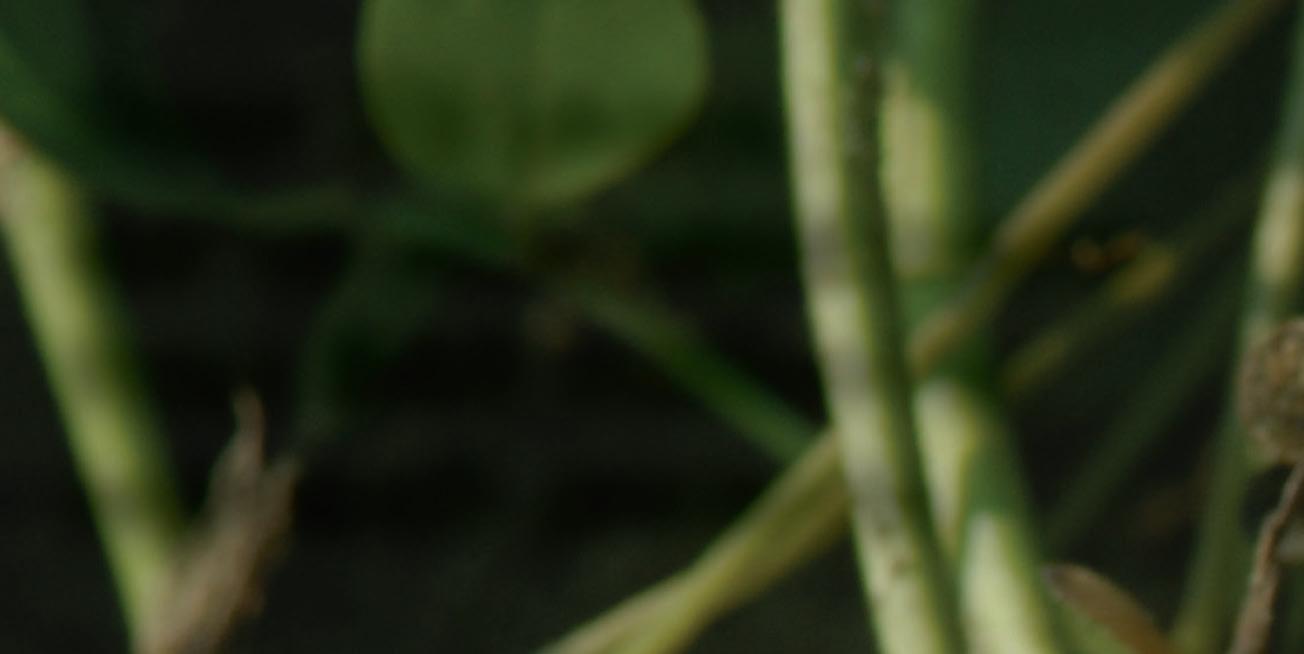

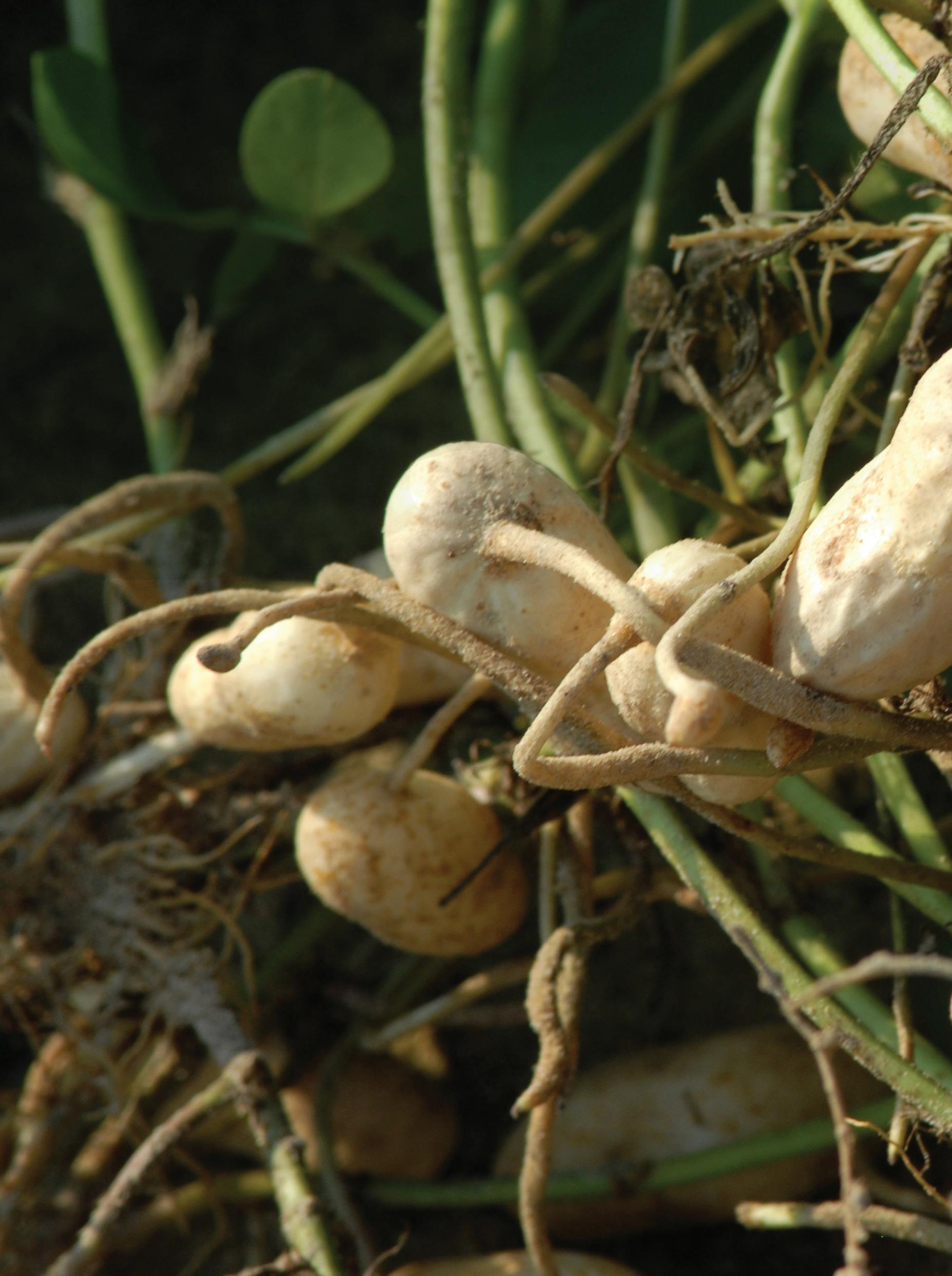
Find out more at PeanutResearch.org
 AMERICA’S PEANUT FARMERS
AMERICA’S PEANUT FARMERS



























































 By Amanda Huber
By Amanda Huber







 By Amanda Huber
By Amanda Huber




































































































 AMERICA’S PEANUT FARMERS
AMERICA’S PEANUT FARMERS
